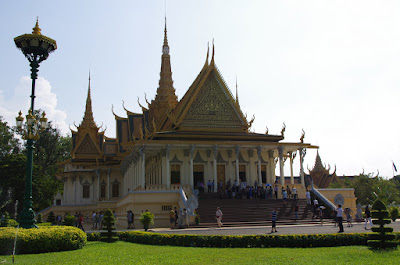All the work Coral Cay does to protect Southern Leyte's reefs would be useless if the island's communities weren't also on board with the idea of conserving these incredible places. That's why the work of the Education Officer, who goes out to communities (especially schools) around Sogod Bay to teach about how special reefs are and why we need to protect them, is so important. I was fortunate to have the opportunity to get involved in this education work when one school came to our base for a day of learning through fun activities!
 |
| Our awesome education officer, far right, greeting a group of students, parents, and teachers upon their arrival at base. |
I began the morning supervising and teaching at the puzzle table with another volunteer. Students unscrambled a couple sentences about the importance of reefs as animals' habitats and to humans, and also deciphered a coded message about the dangers of dynamite fishing and anchors to reefs.
I had a little time after this to investigate the stations other volunteers were working at. At the "scuba dunk tank," kids got to put a mask on and a regulator in their mouths, then stick their faces in a container full of sea creatures while breathing underwater.
All the kids got to go on a snorkel led by a volunteer to see how what they were learning about played out on the real reef:
Now to the best station ever... I got to explain to the students the anatomy of a coral polyp and what happens when a coral is bleached, and then let them go wild constructing their own coral polyps out of marshmallows, icing, and sprinkles!
At the end of the day, a volunteer dressed up as an anemone damselfish to the absolute delight of the children:
 |
| Quite an adventure for us volunteers as well! |
 |
| Unfortunately very hot for the guy inside the suit, but the kids loved it. |
Thanks to the organizational skills of our Education Officer and the hard work of all the staff and volunteers, the day was a great success!











































